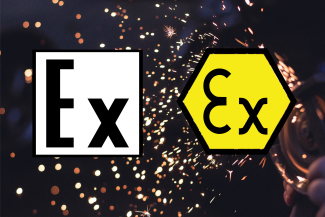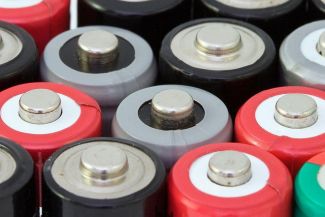
The Certification Oversight Authority has announced new measures to intensify inspection controls for certified products. This initiative, announced on May 2, 2024, aims to strengthen the verification of the authenticity of EAC certificates. This includes monitoring existing agreements between accredited certification bodies and authorized representatives, as well as conducting actual production audits at manufacturing sites, especially inspection controls.
In just the first quarter of this year alone, 20,000 issued EAC certificates were reviewed, with a special focus recently issued EAC certificates for electrical appliances, fire safety equipment, children's clothing and toys. One of the most common violations was the lack of information on customs declaration of imported test samples for laboratory tests.
What is inspection control and when is it required?
Inspection control of certified products is conducted by the accredited certification body that issued the EAC certificate for the product according to the requirements of the technical regulations of the EAEU or according to the requirements of national technical regulations.
The procedure for conducting inspection control during EAC certification is detailed in GOST R 58984-2020.
Inspection control is an integral part of the EAC certification process for issuing EAC certificates with a validity of more than one year.
For EAC declarations, no inspection control is provided – the manufacturer monitors the condition of its production itself.
The accredited certification body must ensure that the manufacturer has not changed since the issuance of the EAC certificate:
- Production technologies
- Technical documentation
- Product characteristics
- Packaging, including labeling
- Standards, whose requirements are the basis for production
Inspection control of certified products repeats all activities that were performed as part of the initial issuance of the EAC certificate. The specific list of activities is determined by the accredited certification body.
For EAC certification of batches or individual products, no inspection control is required. The frequency of inspection control is set in the relevant schemes of EAC conformity assessment.
Who is responsible for inspection control?
Inspection control is typically carried out by an accredited certification body that issued the EAC certificate. It can also be an accredited certification body that has taken over the rights and duties of an accredited certification body that issued the certificate but has lost its accreditation. The loss of accreditation of a certification body can have several reasons:
- The accredited certification body failed to confirm compliance with requirements
- The scope of its accreditation was reduced
- The accreditation certificate was suspended or revoked
If the accreditation of a certification body expires or the scope of its accreditation is limited, the applicant is free to enter into an agreement with another accredited certification body to carry out the inspection control. It is important to ensure that the accreditation of the new certification body covers the relevant certified products.
Frequency of Inspection Control
The frequency of inspection control is typically set in technical regulations. In cases where the frequency is not set by the technical regulations themselves, such as TR CU 004/2011, TR CU 020/2011, the Decision No. 44 of the EAEU Council applies, which stipulates that inspection control should be conducted at least once a year.
Passing inspection control can either confirm, suspend, or terminate the EAC certificate. Should the manufacturer fail to implement necessary corrective measures and rectify the deficiencies identified during the inspection control, the validity of the EAC certificate will be suspended. Furthermore, the validity of the certificate expires if the manufacturer refuses to carry out the inspection control.
Scope of Scheduled Inspection Control
The scope of inspections can be reduced compared to that provided for in EAC certification. It is possible to perform either an analysis of the production site or sampling. However, it may be necessary to perform both. Everything depends on the results of the risk analysis conducted by the accredited certification body. If the risks are low, the scope of inspections is reduced.
In determining the scope of inspections, the certification body considers:
- The results of previously conducted audits of the management system or analysis of the production state
- Customer complaints
- Results of state supervision
As criteria for determining the scope of inspections, GOST R 58984-2020 also recommends considering the stability of product characteristics identified during previous inspections. However, the stability of characteristics cannot be confirmed solely by test results conducted only once a year. It is important that the company has an effective quality management system.
It is also recommended to consider the test results of products conducted by the manufacturer and the labor involved in determining each product characteristic.
The scope of unscheduled inspection control is determined by the accredited certification body based on the nature of the detected violations.
How are the results of the inspection control documented?
Each action carried out under the inspection control is recorded in the final inspection control report. Subsequently, an expert from the accredited certification body prepares an opinion on the compliance of the manufactured products with all requirements of technical regulation.
If necessary, corrective actions and the deadlines within which the manufacturer must implement them are also specified in the final inspection control report.
Legal Consequences and Compliance
Failing inspection control can have severe consequences, including the suspension or expiration of EAC certificates. Manufacturers are therefore required to rectify identified defects promptly. Otherwise, they risk losing the validity of their EAC certificates, which could result in the import and distribution of their products in the Eurasian Economic Union (EAEU) being deemed illegal.
Conclusion
The intensified commitment of the certification oversight in the field of inspection control aims to strengthen the trust in EAC-certified products. This is achieved by ensuring adherence to strict quality standards, which are essential for market safety and the fulfillment of legal requirements. These measures protect consumer interests and ensure the integrity of the conformity assessment process.
For over a decade, our colleagues have been coordinating the implementation of inspection controls. Our company cooperates with a broad network of experts who are also active internationally outside the Eurasian Economic Union (EAEU) and can conduct necessary on-site production status analyses. Thus, we are capable of efficiently conducting inspection controls even under challenging conditions such as closed borders.
Our risk-oriented approach in planning and executing inspection controls allows us to effectively control costs while providing manufacturers with added value. This is achieved through the early detection and prevention of potential non-conformities, thereby ensuring and enhancing product quality.





